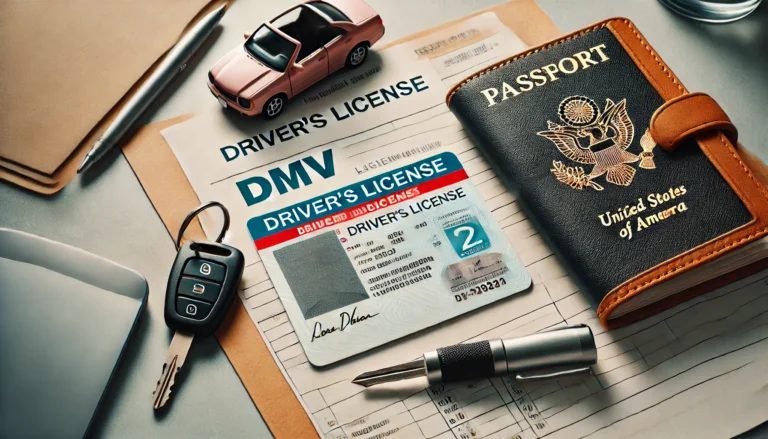Understanding US Traffic Laws
Introduction
Understanding US Traffic Laws What Every Driver Should Know
Understanding U.S. traffic laws is essential for both new and experienced drivers. Traffic laws in the U.S. ensure road safety, regulate driving behaviors, and reduce accidents. Here’s a guide on key traffic laws every driver should know.
1. Speed Limits and Zones
Speed limits vary based on location and road type and are set to ensure safety. Here are the general guidelines:
- Residential Zones: Typically 25–35 mph.
- School Zones: Usually around 15–25 mph during school hours.
- Highways and Freeways: Can range from 55–75 mph, depending on the state.
Key Points:
- Always follow posted speed limits.
- Adjust your speed based on road conditions, such as heavy rain or ice.
2. Right-of-Way Rules
Knowing right-of-way rules prevents accidents and ensures smoother traffic flow. Here’s how it generally works:
- Intersections: At a four-way stop, the driver who arrives first has the right-of-way. If two vehicles arrive simultaneously, the vehicle to the right goes first.
- Pedestrians: Always yield to pedestrians in crosswalks.
- Emergency Vehicles: Pull over to the right side of the road to allow emergency vehicles to pass.
Key Points:
- Yield to other vehicles when entering a roundabout.
- Always check for pedestrians and cyclists when making turns.
3. Traffic Signals and Signs
Traffic signals and road signs regulate vehicle movement and provide critical information for drivers.
- Red Light: Stop completely and proceed only when the light turns green.
- Yellow Light: Slow down and prepare to stop.
- Green Light: Proceed but be cautious of pedestrians and other vehicles.
- Stop Sign: Come to a complete stop and yield to other vehicles or pedestrians as necessary.
Key Points:
- Know the meaning of less common signs, such as yield, railroad crossing, and “no parking” signs.
- Be cautious when lights are flashing, as this often indicates school zones, railroad crossings, or construction areas.
4. Seat Belt Laws
Seat belts significantly reduce the risk of injury during an accident. The law requires all drivers and passengers to wear seat belts.
- Primary Enforcement States: Police can stop you solely for not wearing a seat belt.
- Secondary Enforcement States: Officers can issue a ticket for not wearing a seat belt only if stopped for another offense.
Key Points:
- Most states require both front and rear-seat passengers to buckle up.
- Drivers are typically responsible for ensuring that passengers under 16 wear seat belts.
5. Drunk and Distracted Driving Laws
Driving under the influence (DUI) or while distracted is strictly prohibited across the U.S.
- Blood Alcohol Concentration (BAC): In most states, a BAC of 0.08% or higher is illegal for drivers over 21.
- Zero Tolerance Laws: For drivers under 21, any detectable BAC can lead to severe penalties.
- Distracted Driving: Laws vary by state, but using a mobile phone for texting or calling (without hands-free) is illegal in most states.
Key Points:
- Even small amounts of alcohol can impair driving skills; always consider a designated driver or ride-share if consuming alcohol.
- Hands-free devices are often allowed, but keep distractions to a minimum.
6. No Passing Zones and Lane Discipline
Proper lane discipline and awareness of no-passing zones ensure safety for all road users.
- Solid Yellow Lines: Indicate no passing. Stay within your lane until it’s safe to overtake.
- Two-Lane Roads: Use the left lane for passing and the right lane for slower driving.
- HOV Lanes: High-Occupancy Vehicle (HOV) lanes are reserved for vehicles with multiple occupants during peak hours.
Key Points:
- Observe lane markings and signs carefully to avoid fines.
- Stay in the right lane except when passing on highways.
7. Parking Laws and Restrictions
Parking laws ensure safe and efficient use of parking spaces and prevent traffic obstructions.
- No Parking Zones: Indicated by signs, curbs painted yellow, or cross-hatched lines.
- Handicapped Parking: Reserved for vehicles with a valid disability placard or license plate.
- Fire Hydrants and Bus Stops: Parking is prohibited within certain distances of fire hydrants and bus stops.
Key Points:
- Always check signs before parking, as rules can change depending on location and time of day.
- Avoid parking too close to driveways, intersections, and fire lanes.
8. Yielding to School Buses
In all states, drivers must stop when a school bus displays flashing red lights and extends its stop sign arm.
- Two-Lane Roads: Vehicles in both directions must stop.
- Multi-Lane Roads: Drivers traveling in the same direction as the bus must stop. Opposite-direction drivers may be allowed to proceed if there is a physical median.
Key Points:
- Watch for children crossing the road near buses.
- Severe penalties apply for illegally passing a school bus.
9. Turn Signals and Lane Changes
Signaling lets other drivers know your intentions, helping to prevent accidents.
- Turn Signals: Signal at least 100 feet before turning or changing lanes (check state-specific distances).
- Lane Changes: Always check your mirrors and blind spots before switching lanes.
Key Points:
- Use signals to communicate your actions clearly to other drivers.
- Make gradual lane changes to avoid surprising other road users.
Conclusion
Understanding and following U.S. traffic laws is vital to ensure your safety and that of others on the road. By observing speed limits, yielding the right-of-way, and respecting other drivers, pedestrians, and cyclists, you’ll drive confidently and responsibly. Make sure to check for any state-specific regulations as you go, as they can vary.







